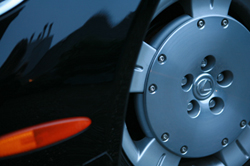Corrosion free magnesium alloys
The potential market for light alloys is practically limitless. Alloys create an opportunity to manufacture a car using metallic materials that have plasticity. Magnesium alloys in particular seem very promising and will most probably replace composites currently used in many other industrial processes. Widespread usage can be achieved provided effective corrosion protection is available. This is not an easy materials' science problem. Corrosion is a macroscopic effect of a microscopic flow of ions. To set the barrier and effectively prohibit the flow without compromising the material's functionality requires nanotechnologies. The NANOMAG project has succeeded in providing corrosion protection using a Plasma enhanced chemical vapour deposition (PECVD) of a thin film. The resulting coating is compact and homogeneous. It is a few hundrednanometres in thickness and has very low porosity. Moreover, the method of applying the coating, PECVD, is a well known and well established deposition procedure. The coating's protective capability is further enhanced by the absence of free silica gel groups and the organic fraction is so low, it is untraceable using Fourier Transform spectroscopy. Extensive laboratory experiments measured coating's resistance. Electrochemical Impedance Spectroscopy data confirmed high values of corrosion resistance. Coating deposition can be achieved with a conventional parallel plate low-density reactor. Equally, a high-density inductively coupled system may be used. Coating processes developed previously were both environmentally hazardous and expensive. In contrast, the method proposed by the NANOMAG project is economic and environmentally friendly.







